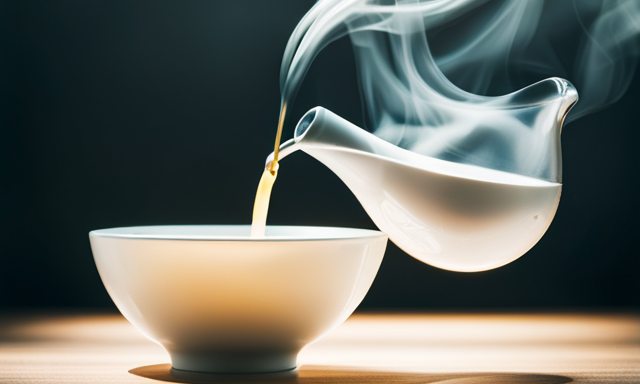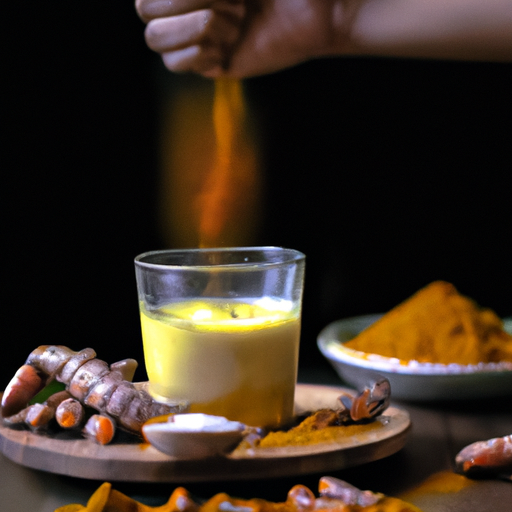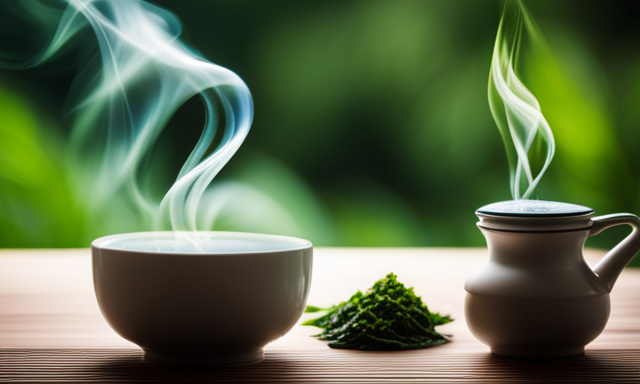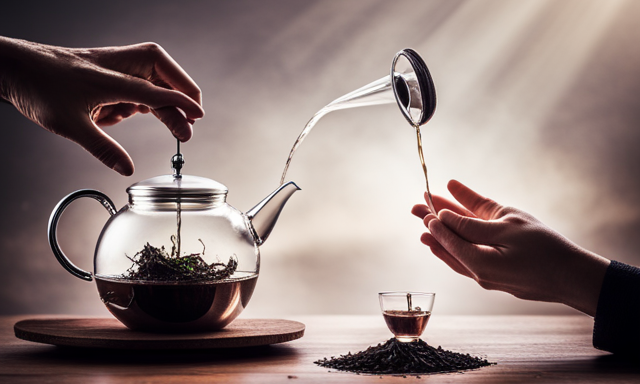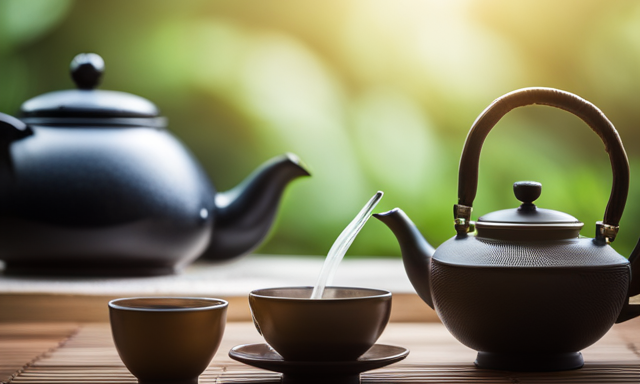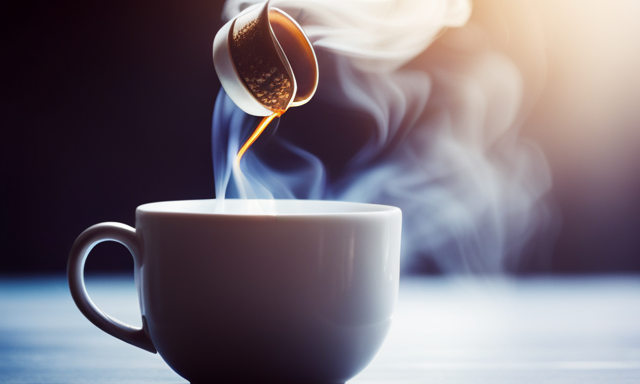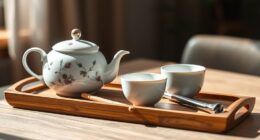Have you ever wanted to indulge in a cup of tea that is creamy, smooth, and utterly delightful? Look no further than milk oolong tea! This exquisite beverage, known for its unique flavor and aroma, is a true gem in the world of tea.
In this article, I will guide you through the art of brewing milk oolong tea, ensuring that every sip is a moment of pure bliss.
To begin this journey, we must first understand the essence of milk oolong tea. Its leaves, carefully handpicked from the high mountain regions of Taiwan, possess a natural milky aroma and a delicate sweetness. The secret lies in the tea plant’s unique cultivation and processing methods, creating a tea that is unlike any other.
By choosing the right milk oolong tea leaves and mastering the art of preparation, you will unlock the full potential of this extraordinary beverage. So, join me as we delve into the world of milk oolong tea, where each step will bring us closer to a perfect cup of indulgence.
Key Takeaways
- Use water around 185°F for brewing Milk Oolong Tea
- Steep the leaves for about 3 minutes to extract delicate flavors and aromas without bitterness
- Explore different brewing techniques to uncover the full potential of Milk Oolong Tea
- Enjoy the numerous health benefits of Milk Oolong Tea, including improved digestion, boosted immune system, and reduced stress levels
Understanding Milk Oolong Tea
If you’re curious about Milk Oolong Tea, let me break it down for you.
This unique tea variety is known for its creamy and smooth taste, making it a favorite among tea enthusiasts.
Milk Oolong Tea, also known as Jin Xuan Tea, originates from Taiwan and is grown in high mountain regions. The tea leaves are carefully handpicked and processed to create a rich and flavorful brew.
One of the main benefits of Milk Oolong Tea is its ability to promote relaxation and reduce stress. It is also believed to aid digestion and support weight loss.
Now that you understand the basics of Milk Oolong Tea, let’s move on to choosing the right milk oolong tea leaves for brewing.
Choosing the Right Milk Oolong Tea Leaves
When selecting Milk Oolong tea leaves, it’s important to find the perfect blend that hits the spot and leaves you wanting more. The choice of tea leaves can greatly impact the flavor profile of your brew. Here are three key factors to consider when choosing tea leaves for your Milk Oolong concoction:
-
Freshness: Opt for leaves that are plucked at the peak of their flavor, ensuring a vibrant and aromatic brew.
-
Oxidation level: Different levels of oxidation will result in varying flavors. From light and floral to creamy and buttery, choose the level that suits your taste preferences.
-
Leaf appearance: Look for tightly rolled, dark green leaves with delicate silver tips. These characteristics indicate high-quality leaves that will yield a rich and satisfying cup of tea.
With the perfect blend of Milk Oolong tea leaves in hand, it’s time to prepare your tea equipment and dive into the art of brewing.
Preparing Your Tea Equipment
To maximize your tea drinking experience, it is important to be well-equipped with the necessary tools and knowledge for a refined infusion. Tea brewing techniques play a crucial role in bringing out the unique flavors and aromas of milk oolong tea.
Start by preparing your tea equipment. Cleanse your teapot or gaiwan with hot water to eliminate any residue that might affect the taste of your brew.
Warming your teacups will also help retain the tea’s heat once it’s poured. Additionally, ensure that your tea kettle is clean and free from any lingering flavors. Tea brewing equipment maintenance is often overlooked but essential for a consistently enjoyable cup.
Now that your equipment is ready, let’s move on to measuring the perfect amount of tea, allowing for a balanced infusion without overpowering the delicate milk oolong flavors.
Measuring the Perfect Amount of Tea
To measure the perfect amount of tea, it is important to have the right tools and knowledge. Accuracy is key when it comes to measuring techniques. Use a scale to weigh out the precise amount of milk oolong tea leaves. Typically, you’ll want to use around 2 to 3 grams per 8-ounce cup of water. This ensures consistency in each brew, resulting in a satisfying cup every time.
If a scale is not available, you can also use a teaspoon or tablespoon as a rough estimate. Remember, brewing tips such as adjusting the amount of tea leaves can be used to customize the strength of your tea.
Now that you have measured the perfect amount of tea, let’s move on to infusing your milk oolong tea for an exceptional tea-drinking experience.
Infusing Your Milk Oolong Tea
Once you’ve measured out the perfect amount of milk oolong tea leaves, it’s time to infuse and indulge in a truly delightful tea-drinking experience. The way you infuse your milk oolong tea can greatly impact its flavor and aroma.
To fully extract the essence of the tea leaves, steep them in water that has been heated to around 195°F (90°C) for about 3-4 minutes. The water temperature is crucial to prevent the delicate leaves from scorching and releasing bitter flavors.
As the tea steeps, you’ll witness the leaves unfurl and release their mesmerizing fragrance, reminiscent of fresh milk and delicate flowers. Milk oolong tea is not only a treat for the senses but also offers numerous health benefits, including improved digestion and a boost to the immune system.
So, let’s delve into enhancing the flavor of your milk oolong tea by exploring some exciting additions and techniques.
Enhancing the Flavor of Your Milk Oolong Tea
Indulge your taste buds with a burst of flavor by adding a hint of citrus or a sprinkle of honey to your velvety, aromatic cup of milk oolong. Enhancing the flavor of your milk oolong tea can be a delightful experience. Here are three simple brewing techniques that will take your tea to the next level:
-
Citrus Twist: Squeeze a slice of lemon or orange into your tea for a refreshing zing. The citrusy notes complement the creamy taste of milk oolong, creating a harmonious blend.
-
Sweet Honey: Drizzle a teaspoon of honey into your cup and watch as it dissolves into the tea, adding a subtle sweetness. The floral undertones of milk oolong beautifully harmonize with the golden richness of honey.
-
Floral Infusion: Add a few fresh jasmine flowers or rose petals to your tea leaves and let them steep together. The delicate floral aroma will infuse into the tea, enhancing its natural fragrance.
Now that your milk oolong tea is bursting with flavor, it’s time to move on to the next step: serving and enjoying your brewed milk oolong tea.
Serving and Enjoying Your Brewed Milk Oolong Tea
Serving up your velvety, aromatic cup of milk oolong tea is like a symphony of flavors, a dance of fragrance, and a feast for your senses. As you bring the teapot to the table, the tantalizing aroma fills the air, heightening your anticipation. Pouring the tea into your delicate teacup, you marvel at the liquid’s golden hue, which is as captivating as the tea’s taste. The first sip envelopes your palate with a smooth, creamy texture, followed by a subtle sweetness that lingers on your tongue. The flavor profile of milk oolong tea is truly exceptional, with notes of orchid, butter, and fresh milk. To enhance your tea experience, consider pairing it with light and floral desserts, such as fruit tarts or almond cookies. As you savor each sip, you transport yourself to a tranquil tea garden, embracing the calming influence of this extraordinary brew. Now, let’s delve into the art of storing and preserving milk oolong tea, ensuring that its flavors remain intact.
Storing and Preserving Milk Oolong Tea
To ensure the full flavor and freshness of your beloved milk oolong, it’s essential to properly store and preserve this exquisite tea. Storing techniques play a crucial role in maintaining the delicate taste and aroma of milk oolong.
Firstly, store the tea leaves in an airtight container to prevent exposure to moisture, light, and strong odors. This will help preserve the tea’s natural flavors and prevent it from absorbing unwanted scents.
Secondly, store the container in a cool, dry place away from direct sunlight and heat sources. Temperature fluctuations can degrade the tea’s quality.
Lastly, avoid storing milk oolong near strong-smelling substances like spices or coffee to prevent flavor contamination. By following these storing techniques, you can enjoy the full freshness of your milk oolong tea for an extended period.
Now, let’s explore the exciting variations of milk oolong tea.
Exploring Milk Oolong Tea Variations
After carefully storing and preserving your Milk Oolong Tea, it’s time to explore the exciting world of Milk Oolong Tea variations. As a tea connoisseur, I’m always eager to discover new tastes and experiences.
When it comes to Milk Oolong Tea, there are endless possibilities to enjoy. Let me share with you some of the delightful variations that will make your taste buds dance with joy:
-
Milk Oolong Tea Latte: Indulge in a velvety and creamy cup of latte made with Milk Oolong Tea for a comforting and soothing experience.
-
Milk Oolong Iced Tea: Beat the heat with a refreshing glass of iced Milk Oolong Tea, perfect for a hot summer day.
-
Milk Oolong Tea Smoothie: Blend this fragrant tea with fresh fruits and yogurt for a healthy and invigorating smoothie.
-
Milk Oolong Tea Popsicles: Freeze brewed Milk Oolong Tea with a touch of honey for a delightful frozen treat.
-
Milk Oolong Tea Sorbet: Experience the essence of Milk Oolong Tea in a light and refreshing sorbet.
Exploring these variations not only allows you to enjoy the unique flavors of Milk Oolong Tea but also benefits your health with its numerous antioxidants and digestive properties.
With these exciting recipes, you can continue your milk oolong tea journey and create your own signature concoctions that will leave everyone craving for more.
Continuing Your Milk Oolong Tea Journey
If you’re hesitant to try new variations, imagine the delightful aroma and smooth texture that will transport you to a world of Milk Oolong Tea bliss.
Continuing your Milk Oolong Tea journey is an exciting endeavor that will introduce you to different brewing techniques and allow you to fully experience its health benefits.
When it comes to brewing this exquisite tea, it’s important to pay attention to the water temperature and steeping time. For a perfect cup, use water that is around 185°F and steep the leaves for about 3 minutes. This will ensure that you extract the delicate flavors and aromas without any bitterness.
As you explore different brewing techniques, you’ll discover the subtle variations in taste and texture, uncovering the full potential of Milk Oolong Tea.
Embrace this journey and savor the numerous health benefits that this tea has to offer, such as improved digestion, boosted immune system, and reduced stress levels.
Frequently Asked Questions
How long does milk oolong tea stay fresh after opening the package?
Milk oolong tea stays fresh for about 6-12 months after opening the package, as long as it is stored properly in an airtight container away from heat, light, and moisture. Yes, you can use milk oolong tea leaves for multiple infusions, enjoying its delicate flavor with each steep.
Can I use milk oolong tea leaves for multiple infusions?
Yes, you can use milk oolong tea leaves for multiple infusions. To maximize flavor, try steeping the leaves for shorter periods of time with each infusion, gradually increasing the steeping time.
Is it necessary to rinse the milk oolong tea leaves before brewing?
Yes, it is necessary to rinse the milk oolong tea leaves before preparing. Rinsing removes any impurities and dust from the leaves, allowing for a cleaner infusion and enhancing the flavor and aroma of the tea.
Can I add sweeteners such as honey or sugar to my milk oolong tea?
Yes, you can add sweeteners like honey or sugar to your milk oolong tea. They provide a delightful sweetness that complements the creamy, floral flavors of the tea. Additionally, you can experiment with alternative sweeteners for a unique twist.
What are some potential health benefits of drinking milk oolong tea?
Drinking milk oolong tea is like taking a refreshing stroll through a lush garden. Its potential health benefits include improved digestion and hydration. Brewing techniques ensure a flavorful, aromatic cup that nourishes the mind and body.
Conclusion
In conclusion, brewing milk oolong tea is a delightful experience that allows you to indulge in the smooth and creamy flavors of this unique tea. By following the steps outlined in this guide, you can create a perfectly brewed cup of milk oolong tea that will transport you to a world of pure bliss.
So, grab your favorite tea equipment, measure out the perfect amount of leaves, and infuse them gently to unlock the full potential of this exquisite tea. Remember, it’s all about savoring each sip and embracing the journey of discovering different variations of milk oolong tea.
Cheers to a tea-riffic adventure!

